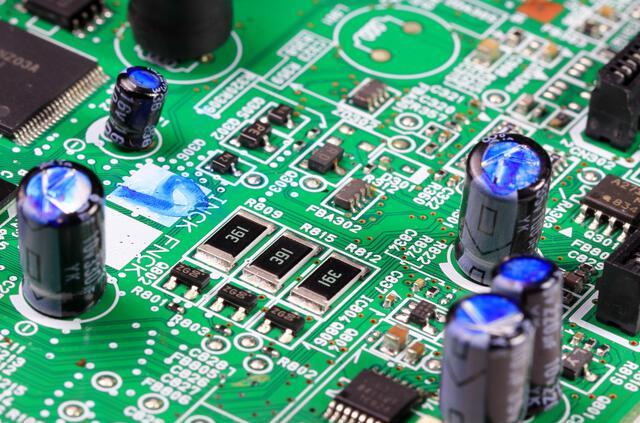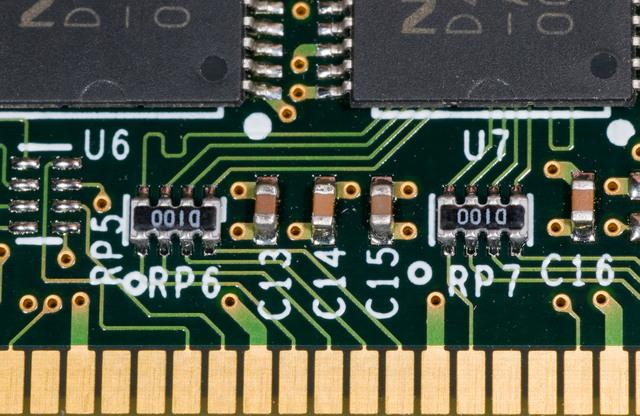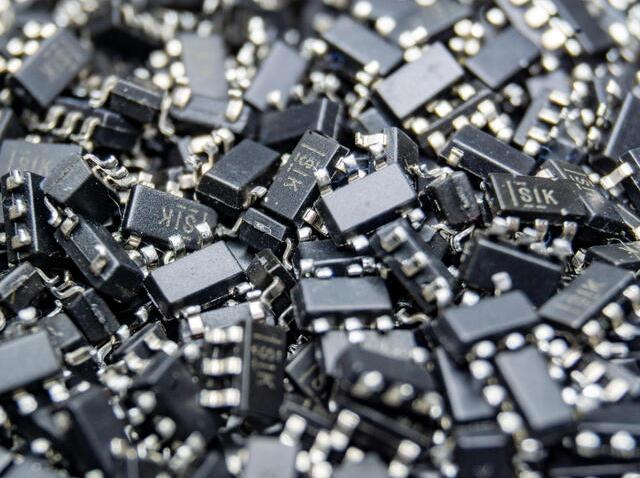Content Menu
● Introduction to SMT Stencils
>> Importance of Stencils in SMT Assembly
● Design Considerations for SMT Stencils
>> Custom Aperture Designs
● Manufacturing Methods for SMT Stencils
● Optimizing Stencil Performance
>> Advanced Coatings
● Role of Stencils in Automated SMT Production Lines
>> Integration with Desktop SMT Pick and Place Machines
● Types of SMT Stencils
● Future Trends in SMT Stencil Technology
● Case Studies: Optimizing SMT Production with Stencils
● Conclusion
● FAQ
>> 1. What is the primary function of an SMT stencil in PCB assembly?
>> 2. How does stencil thickness affect solder paste application?
>> 3. What are the benefits of using a nano-coating on SMT stencils?
>> 4. How do framed and frameless stencils differ in terms of application?
>> 5. What role do stencils play in automated SMT production lines?
● Citations:
In the rapidly evolving world of electronics manufacturing, Surface Mount Technology (SMT) plays a pivotal role in creating printed circuit boards (PCBs) and electronic assemblies. One crucial element in the SMT process is the stencil, which is used to apply solder paste onto the PCB. This article will explore how optimizing your SMT production line with the right stencil can significantly enhance efficiency, quality, and productivity.

Introduction to SMT Stencils
SMT stencils are thin sheets, typically made from stainless steel or nickel, with precision-cut openings (apertures) that match the locations of surface mount components on a PCB. These apertures allow solder paste to be deposited in exact locations before components are mounted. The use of stencils ensures accurate and consistent solder paste application, which is critical for achieving high-quality solder joints and reliable electronic assemblies.
Importance of Stencils in SMT Assembly
1. Precision Solder Paste Deposition: Stencils ensure that the correct amount of solder paste is applied to each pad, reducing the risk of defects such as bridging or insufficient solder.
2. Consistent Solder Paste Volume: The thickness of the stencil determines the volume of solder paste deposited, allowing for uniform soldering quality across the PCB.
3. Increased Efficiency: Stencils enable simultaneous solder paste application to all pads, significantly speeding up the assembly process.
4. Compatibility with Automated Assembly: Stencils are essential for automated assembly lines, allowing for high-volume manufacturing with consistent results.
Design Considerations for SMT Stencils
Optimizing stencil design is crucial for achieving high-quality solder paste prints and minimizing defects. Key design considerations include:
- Aperture Size and Shape: Apertures should match the size and shape of PCB pads, considering solder paste shrinkage during reflow. Common aperture shapes include rectangles, circles, and home plates. Designers must adhere to minimum aperture width and pitch guidelines to ensure proper paste release and prevent bridging[1][3].
- Stencil Thickness: Thicker stencils provide more robust solder paste deposits but may hinder paste release, while thinner stencils are ideal for fine-pitch components but may struggle with sufficient paste volume[1][4]. Manufacturers must balance thickness based on PCB design, component specifications, and solder paste characteristics.
- Material Selection: Common materials include stainless steel and nickel, with options like fine-grained sheet metal for improved precision[5].
Custom Aperture Designs
For challenging components or unique PCB layouts, custom aperture designs can be implemented. This may include modified shapes or stepped apertures to optimize paste deposition for specific components[1].
Manufacturing Methods for SMT Stencils
SMT stencils can be manufactured using several methods:
- Laser Cutting: This is the most common and precise method, ideal for creating fine-pitch apertures and complex designs. Laser cutting offers excellent accuracy and repeatability[1].
- Chemical Etching: An alternative process that involves using a photoresist mask and chemical solution to create apertures. While less precise than laser cutting, it can be cost-effective for larger apertures or thicker stencils[1].
- Electroforming: This method produces high-precision stencils with smooth surfaces, often used for specialized applications[4].
Optimizing Stencil Performance
Several techniques can enhance stencil performance:
- Nano-coating: Applying a nano-coating improves paste release and reduces cleaning needs by enhancing the stencil's hydrophobic properties[1][2].
- Electropolishing: Smoothing microscopic imperfections on the stencil surface improves paste release and print quality, particularly beneficial for fine-pitch applications[1].
- Stencil Maintenance: Regular cleaning and storage in a clean environment are essential for maintaining stencil performance[3].
Advanced Coatings
Recent advancements include the use of Chemical Vapor Deposited (CVD) coatings, which offer enhanced corrosion resistance and improved stencil longevity. These coatings provide a smoother surface, enhancing transfer efficiency and outperforming traditional nano-coatings[6].

Role of Stencils in Automated SMT Production Lines
Automated SMT production lines rely heavily on stencils to ensure efficient and precise solder paste application. Key components of an automated line include:
- Pick-and-Place Machines: Automatically place components onto the PCB with high precision and speed.
- Solder Paste Printers: Use stencils to apply solder paste to PCBs quickly and accurately.
- Reflow Ovens: Solder components onto the PCB through controlled heating and cooling cycles.
- Automated Optical Inspection (AOI) Systems: Inspect soldering quality and component placement to ensure high product reliability.
Integration with Desktop SMT Pick and Place Machines
Desktop SMT pick and place machines are designed for smaller-scale production and prototyping. These machines can be integrated with stencils to enhance precision and efficiency in low-volume manufacturing. Stencils ensure consistent solder paste application, which is crucial for achieving reliable solder joints even in smaller production runs.
Types of SMT Stencils
SMT stencils come in different types to suit various applications:
- Framed Stencils: Ideal for high-volume production, these stencils are mounted in a frame for optimal positional accuracy.
- Frameless Stencils: Suitable for low-volume production or prototyping, these stencils are cost-effective and save storage space.
- Step Stencils: Used for components with varying solder paste requirements, such as BGA chips.
Future Trends in SMT Stencil Technology
As electronics manufacturing continues to evolve, SMT stencil technology is advancing to meet new challenges:
- 3D Printed Stencils: Additive manufacturing techniques are being explored for creating complex, multi-level stencils that can accommodate a wide range of components[1][2].
- Smart Stencils: Integrating sensors and data collection capabilities into stencils could provide real-time feedback on print quality and stencil performance[1].
- Integrated Inspection Systems: Emerging technologies integrate automated inspection systems into the stencil printing process, enabling real-time monitoring of solder paste deposition quality[2].
Case Studies: Optimizing SMT Production with Stencils
Several companies have successfully optimized their SMT production lines by focusing on stencil design and performance:
- Improved Yield: By optimizing stencil thickness and aperture design, manufacturers can significantly reduce defects such as bridging and insufficient solder, leading to higher yields and reduced rework costs.
- Enhanced Efficiency: Implementing advanced coatings like nano-coatings or CVD treatments can reduce cleaning needs and improve paste release, streamlining the production process.
Conclusion
Optimizing your SMT production line with the right stencil is crucial for achieving high-quality electronic assemblies. By understanding the importance of stencil design, material selection, and performance optimization, manufacturers can significantly enhance efficiency, reduce defects, and improve product reliability. As technology advances, integrating stencils with automated systems like desktop SMT pick and place machines will continue to play a vital role in modern electronics manufacturing.

FAQ
1. What is the primary function of an SMT stencil in PCB assembly?
- The primary function of an SMT stencil is to ensure precise solder paste deposition onto the PCB pads, matching the size and location of the pads for optimal soldering quality.
2. How does stencil thickness affect solder paste application?
- Stencil thickness determines the volume of solder paste deposited. Thicker stencils provide more robust deposits but may hinder paste release, while thinner stencils are ideal for fine-pitch components but may struggle with sufficient paste volume.
3. What are the benefits of using a nano-coating on SMT stencils?
- A nano-coating improves paste release and reduces the need for frequent cleaning by enhancing the stencil's hydrophobic properties.
4. How do framed and frameless stencils differ in terms of application?
- Framed stencils are ideal for high-volume production due to their positional accuracy, while frameless stencils are cost-effective and suitable for low-volume production or prototyping.
5. What role do stencils play in automated SMT production lines?
- Stencils are essential for automated SMT production lines as they enable precise and efficient solder paste application, ensuring consistent results in high-volume manufacturing.
Citations:
[1] https://pcbpit.com/smt-stencil-a-comprehensive-guide/
[2] https://jlcpcb.com/blog/guide-to-smt-stencils-in-pcb-assembly
[3] https://rigidflexpcb.org/comprehensive-guide-to-smt-stencils/
[4] https://www.ideaspcb.com/news/does-stencil-have-quality-impact-on-smt-patch-60022834.html
[5] https://www.ipc.org/system/files/technical_resource/E38&S12-02%20-%20Chrys%20Shea.pdf
[6] https://www.stentech.com/company/cvd-treatment-for-smt-stencils
[7] https://www.jycircuitboard.com/news/stencil-classification-effect-on-pcba-smt-processing-283.html
[8] https://www.macrofab.com/blog/innovations-in-solder-paste-printing-technology/
[9] https://www.aculon.com/pdfs/SMTA-Shea-Whittier.pdf
[10] https://fctsolder.com/wp-content/uploads/2017/08/123386-361848.smt-printing-challenges.pdf
[11] https://www.7pcb.com/blog/design-principles-stencil-aperatures
[12] https://www.oem-pcb.com/news/the-role-of-stencils-in-smt-precision-effici-80830062.html
[13] https://www.datainsightsmarket.com/reports/stainless-steel-smt-stencil-1660616
[14] https://www.linkedin.com/pulse/creating-optimal-smt-stencils-joshua-lawson
[15] https://www.stentech.com/products/advanced-nano
[16] https://www.surfacemountprocess.com/a-guide-to-effective-stencil-design.html
[17] https://www.circuitinsight.com/pdf/impact_stencil_quality_technology_solder_paste_printing_performance_smta.pdf
[18] https://southeast.newschannelnebraska.com/story/52593679/SMT-Stencil-Printer-Market-Powering-the-Next-Wave-of-Innovation/
[19] https://blueringstencils.com/top-5-smt-industry-trends-for-2019/
[20] https://iconnect007.com/article/118546/smt-stencils-101-what-are-industrystandard-stencil-designs/118549/smt




















